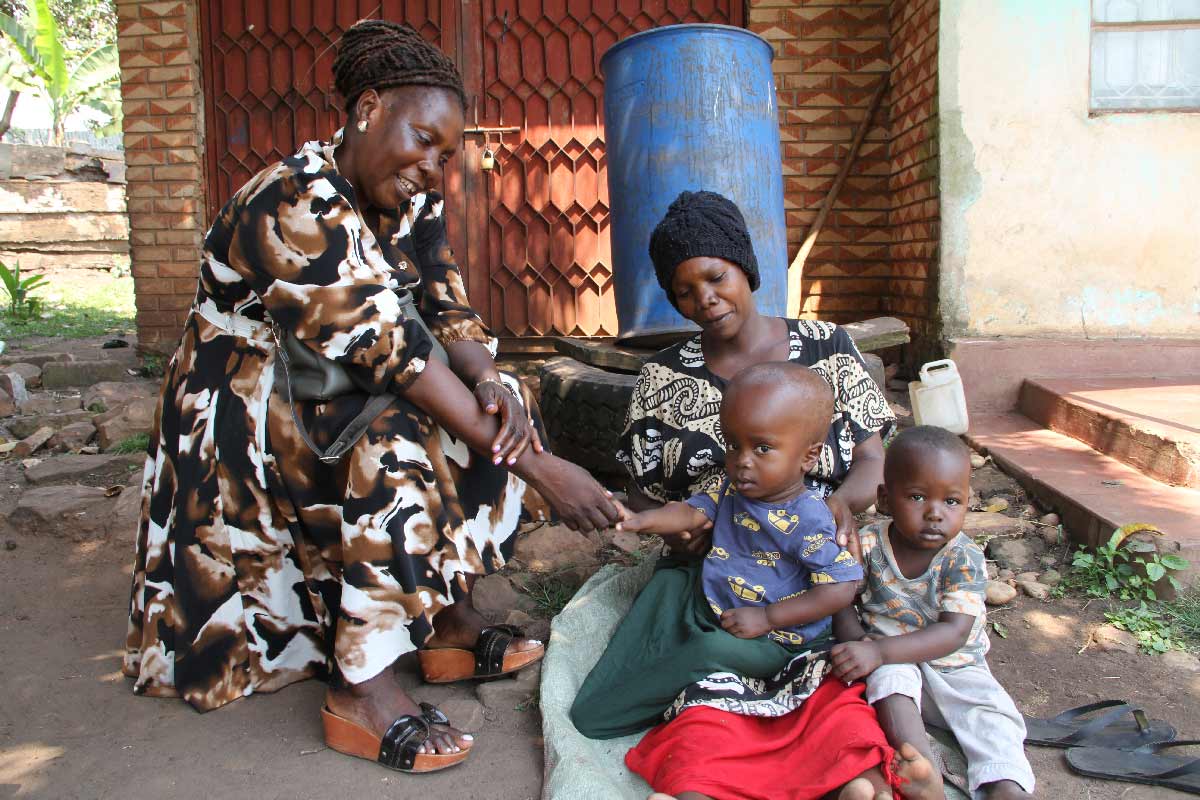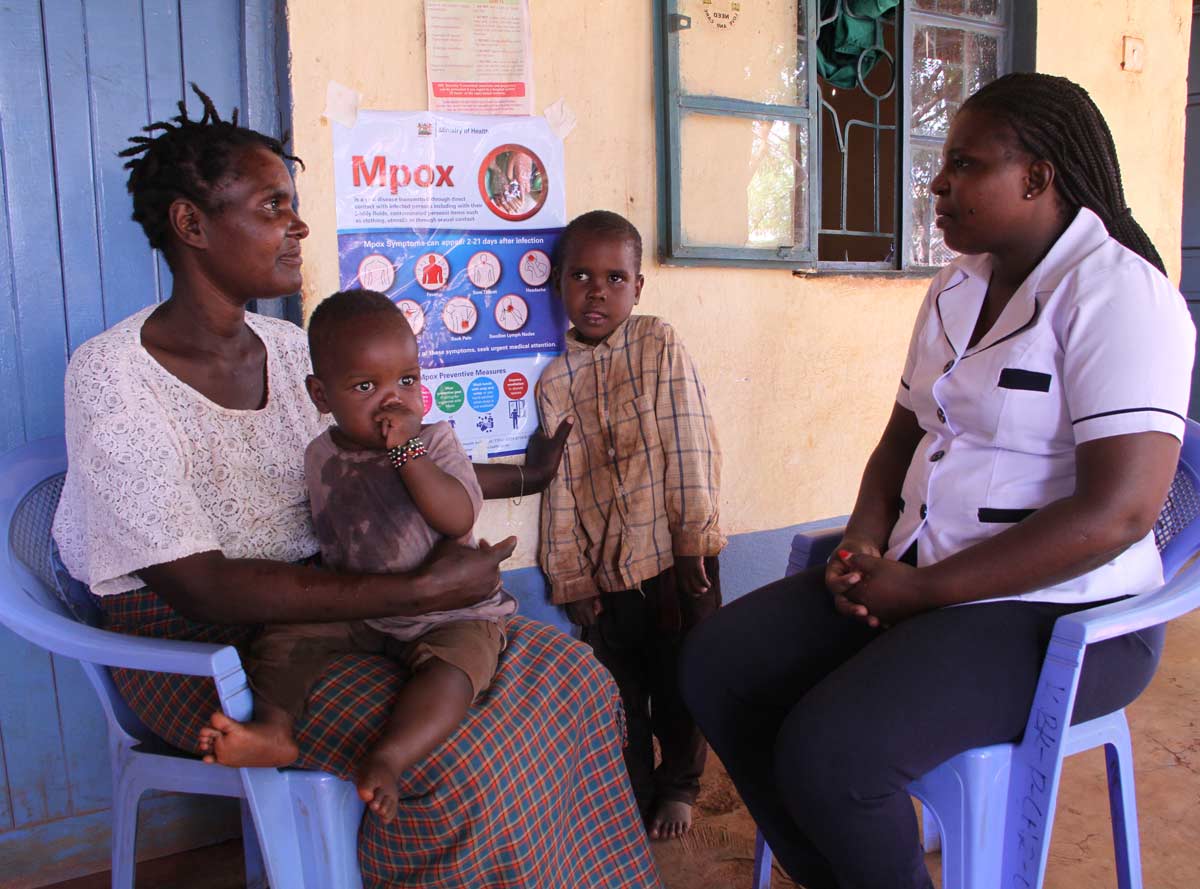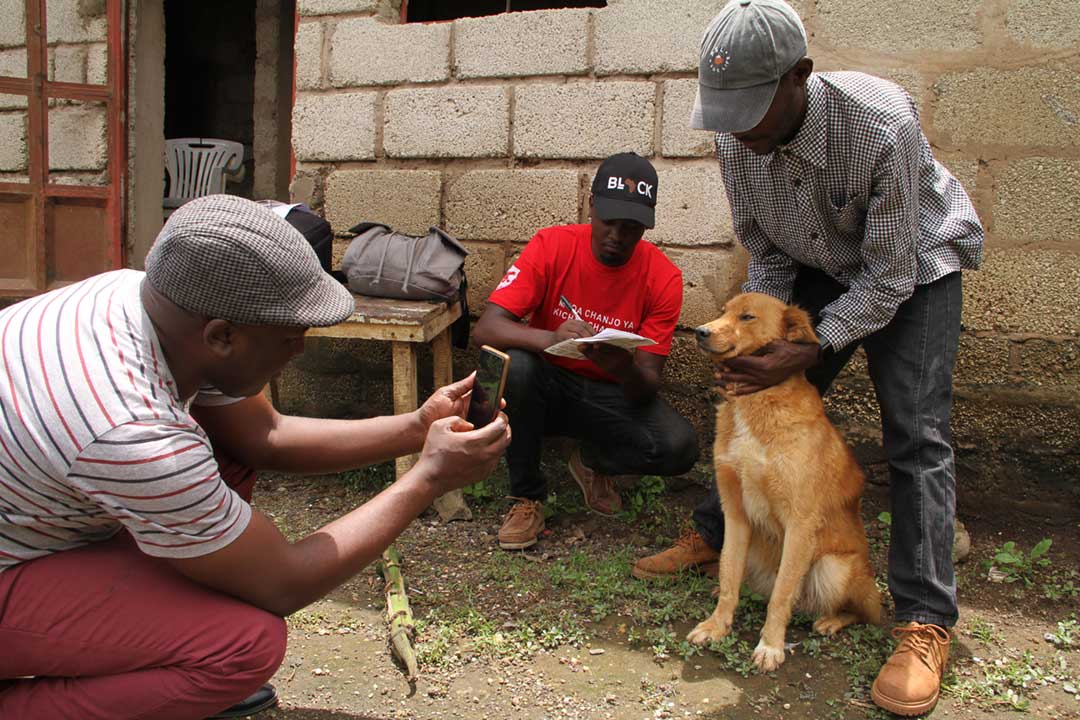In Kenya’s drought-prone Marsabit, pastoralists farm to fight childhood malnutrition, disease
As droughts bite increasingly frequently, animal herders in Kenya’s arid north are growing greens and fruits to bolster both food security and their kids’ immune systems.
- 9 August 2024
- 6 min read
- by James Karuga

For 63-year-old Joyce Dafar Dai, a typical day is spent working her half-acre farm in Songa, in northern Kenya’s Marsabit county. In a pastoralist community, and in a region known for recurring droughts, the greenery of Dafar’s farm seems anomalous: it’s dotted with trees like mango, lemon and avocado that also provide shading.
She also grows sweet potatoes, amaranth, collard greens, capsicum and fruit tree seedlings in a nursery under a shade net. The farm has a water pan for harvesting rain water that helps keep crops irrigated during droughts, and an apiary for honey production. She rears goats and cows for milk and meat.
Farming is a departure for Dafar, who grew up in a pastoralist family. But her land-holding produces enough to feed her family, and the surplus she sells to pay for her children’s education.
Jarso says he grew up largely on milk, meat and wild fruits, but is proud that his young family receives a balanced diet from what he farms.
She’s not alone in making the shift. Embracing farming is helping Marsabit pastoralist communities to be food secure especially when droughts kill livestock, their main livelihood source.
Growing up, Dafar recalls that her family’s diet was mostly meat, milk and blood. She has seen children suffer severely from illnesses like anaemia, kwashiorkor, malaria and diarrhoea due to malnutrition. The crops she grows are not traditionally consumed in their culture, but diversifying her family’s diets is having a marked positive impact on their health, Dafar notes.
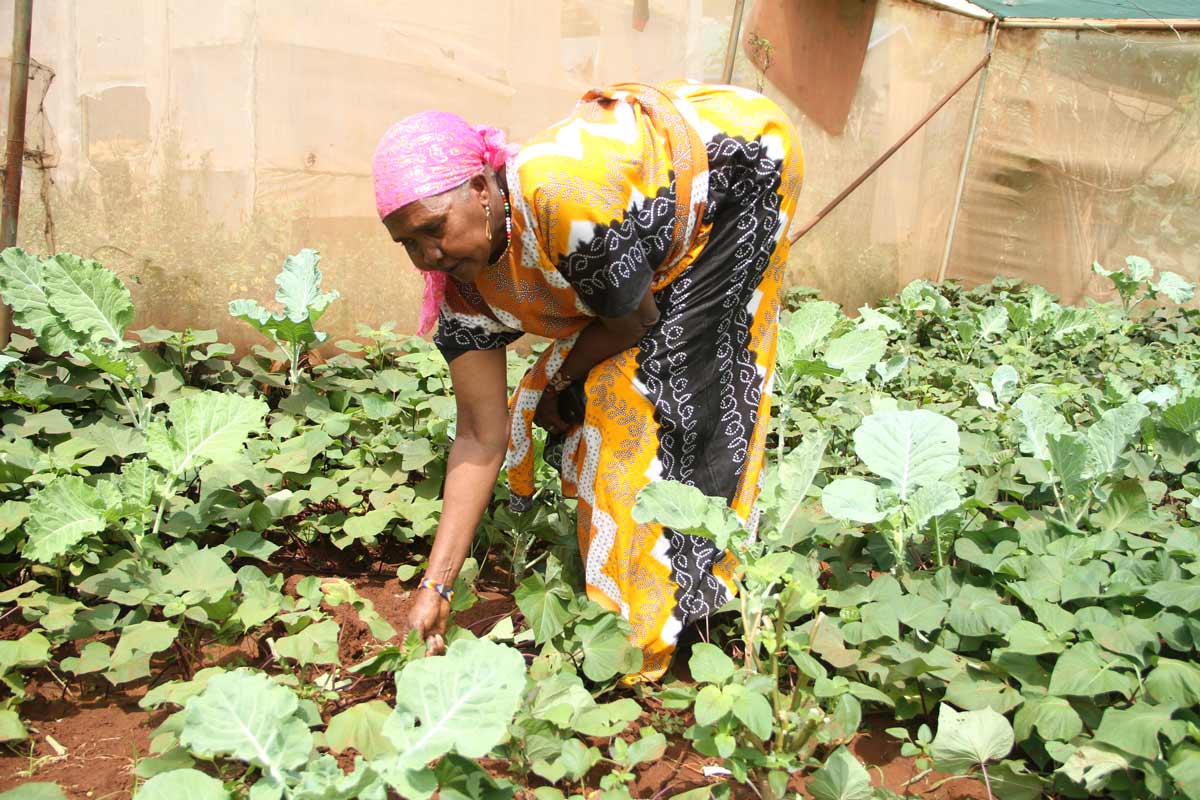
“If you look at these grandchildren, I can’t remember when I took them to hospital because when you feed children with a balanced diet it helps their bodies to be healthy and strong enough to fight diseases,” Dafar says.
Studies have found that 55% of all global deaths among children under five years are attributable to undernutrition. In many of those cases, malnutrition has weakened the body’s immune defences, and illness has been able to take over.
Farmer-cum-health worker
Dafar, who is also is a community health promoter (CHP) for 20 households in her community, actively educates young mothers on how to nourish their children with a balanced diet to prevent malnutrition or related deaths.
Some Marsabit schools are also embracing farming to address food insecurity and encourage attendance. Kalacha Nomadic Girls Primary School, near Chalbi Desert, which has 498 students, started an agricultural club in 2023. They are growing cowpeas, spinach, collard greens and green grams. The club’s patron, Boniface Guyo guides students on how to plant, tend and harvest them.

According to Janet Lokit, the head teacher, cowpeas supplement their school feeding programme thrice per week, and are especially helpful in the diets of menstruating young girls. According to studies, cowpea leaves are rich in iron, whose deficiency in the body causes anaemia.
“They are finishing the food (portions) because it’s delicious,” Lokit added.
The knock-ons are encouraging. Absenteeism and teen pregnancies cases at the school are non-existent according to Lokit. The students are also spreading the word to their peers in other schools on the diversified diet they are eating. Consequently, teachers from those schools are visiting to learn how to replicate that agricultural model at their farms.
Climate buffer
Also in Marsabit, staff from the development organisation Food for the Hungry Kenya (FH Kenya) staff are training the pastoralists and schools on agronomic issues like soil health, crop selection, on farm management and rain water harvesting. This increases the likelihood that pastoralists have surplus food when climate shocks – like the all-to-common droughts – decimate their livestock. They are also providing dam liners for water pans and tanks for rainwater harvesting to hardworking farmers and schools embracing farming.
“In a region facing very high acute malnutrition rates, we’ve seen this approach have a positive impact on provision of nutritious food in schools and increase of retention of children in schools, even at the peak of droughts,” said Alex Mwaura FH Kenya’s country director.
FH Kenya also organises visits to Yatta plateau in Kitui County, where pastoralists learn how high value crop farming in semi-arid regions can transform their livelihoods.
In January 2023, Busuru recalls they got a report that 11 children below five years died of malnutrition, after rains failed for five consecutive seasons, which resulted in mass livestock deaths.
Such tours changed the mindset of Abdub Jarso, a 31-year-old father of two who, like Dafar, was raised in a pastoralist household. In 2019 he cleared bushes on 2.5 acres of community land, dug a water pan, and FH Kenya provided the dam liner. Today he grows tomatoes, bananas, green grams, teff, sugarcane, maize, watermelons, beans, sweet potatoes, passion fruits, plus mango and pawpaw trees.
FH Kenya also gave him nine beehives and he sells a litre of honey for 1,000 Kenyan shillings per litre, which is his most profitable venture so far. Jarso says he grew up largely on milk, meat and wild fruits, but is proud that his young family receives a balanced diet from what he farms.

Ongoing challenge
Although some pastoralists are diversifying their diets by farming, childhood malnutrition remains prevalent in Marsabit, according to Mayling Busuru, the nutritional coordinator of North Horr sub-county, one of four Marsabit’s sub-counties. North Horr, at 22.5%, has the highest rates of acute malnutrition in Marsabit for children of ages 6 to 59 months, according to a 2023 Kenyan government study.
Rates of childhood malnutrition are correlated with higher rates of child marriages in Marsabit, as with low literacy rates. According to Busuru, girls as young as 12 years get married due to traditions and get pregnant while their bodies have not fully matured.
“This is a child pregnant, so the nutrients the body requires have to double to cater for the baby in the womb. So those underage children (girls) give birth to underweight children who come (are born into) to an environment with food insecurity and grow malnourished,” Busuru said.
Droughts make the situation worse for nursing mothers. In January 2023, Busuru recalls they got a report that 11 children below five years died of malnutrition, after rains failed for five consecutive seasons, which resulted in mass livestock deaths.
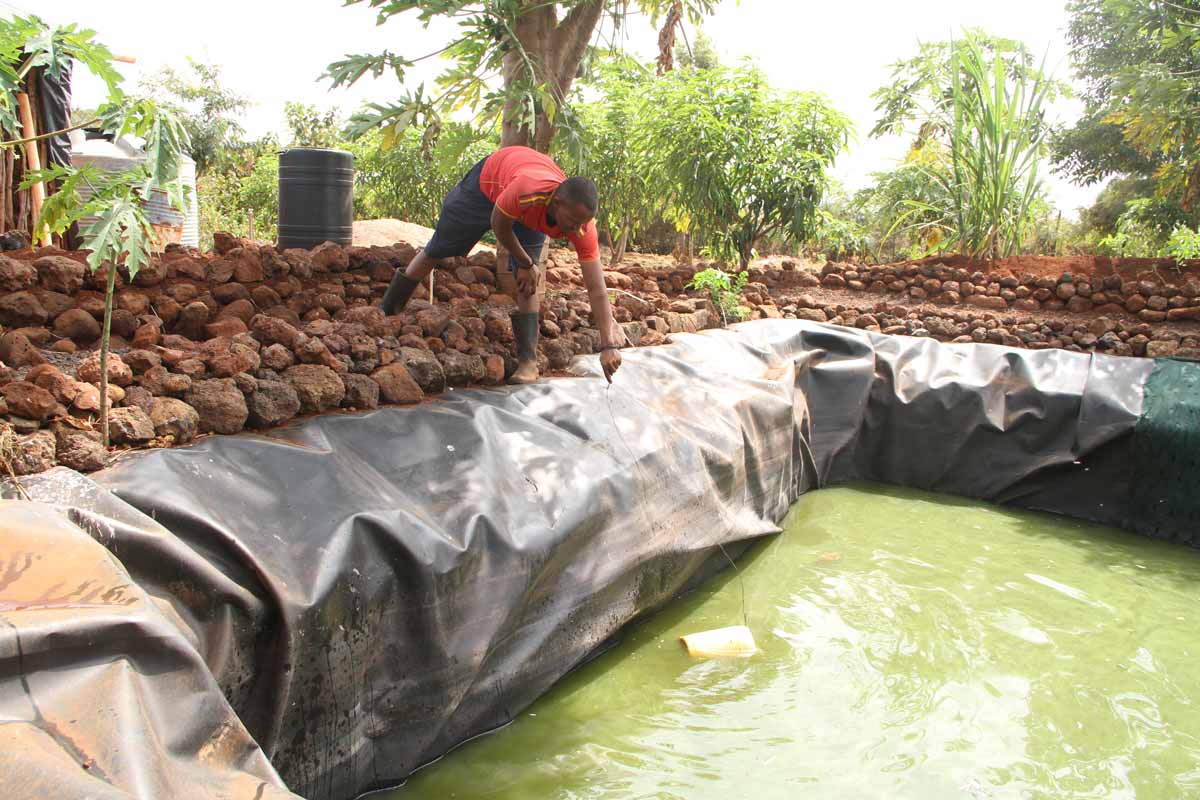
Health care access for mothers with newborns is a challenge too since Marsabit is vast and has a sparse, nomadic population living typically far from health facilities. Some babies grow up unimmunised. Busuru says they can see two or three mothers at a health facility daily, but some visit only when disease symptoms progress – too late, often, for preventive action. Marsabit immunisation coverage is 68% currently according to a 2023 report by the county government – far behind the national rate.
Busuru says he has seen unvaccinated children ill with polio and tuberculosis, a common ailment in Marsabit. A study by the International Union Against Tuberculosis and Lung Disease reports thatmalnourished children are at higher risk of death from infectious diseases like tuberculosis. And 26% of all tuberculosis cases in 22 high-burden countries are linked to undernutrition.
Have you read?
To address the malnutrition challenges, Busuru educates mothers on maternal nutrition in over 7,000 households. Milk, meat, rice, maize, beans and cabbages are traditionally their staple diets. But she is teaching them about nutritious “new foods” like collard greens, spinach and amaranth, plus how to grow them on kitchen gardens, pluck and cook them. She has also introduced oranges, avocados and bananas to them.
Since fruits are costly by the time they reach them, they prefer staple diets that fill their stomach to alleviate hunger. That’s why Busuru says increasing literacy levels is vital to fighting malnutrition as it will help change entrenched dietary mindsets.
For Dafar, diet diversification and mindset change has helped to improve health in her community and reduced rates of illness. “In our culture we never ate eggs or chicken but we are telling young mothers to be giving them to children, to help their bodies resist diseases,” Dafar said.
More from James Karuga
Recommended for you





